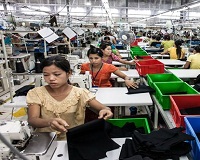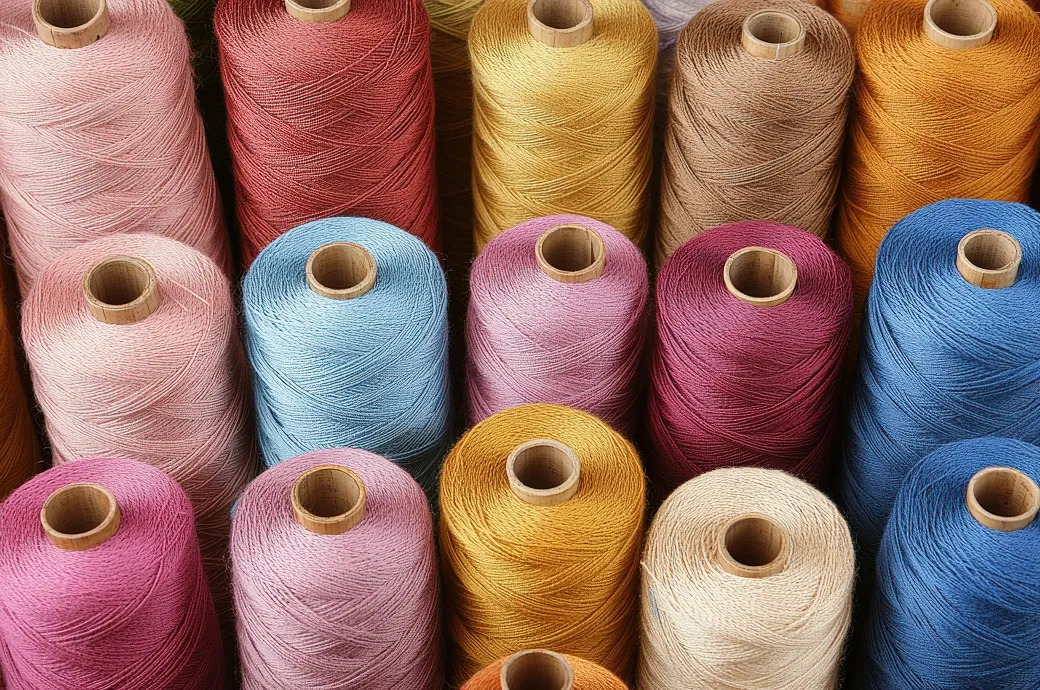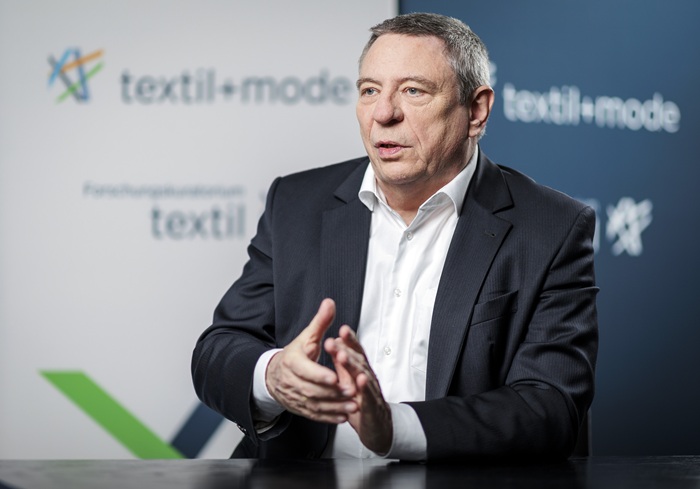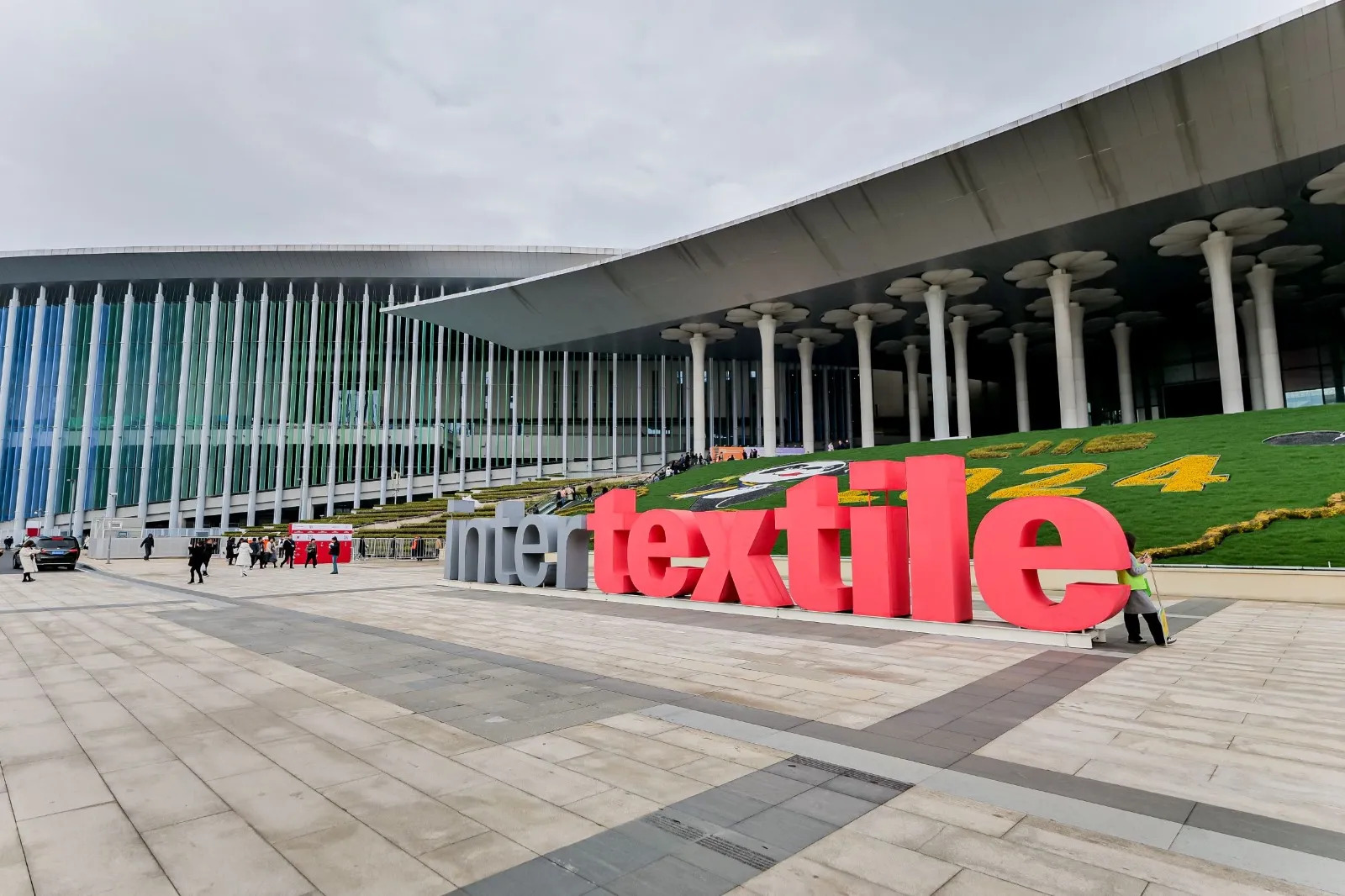FW
The government of Bangladesh is set to give 500 acres of land within the SEZ in Mirersharai of Chittagong to the Bangladesh Garment Manufacturers and Exporters Association (BGMEA) to enhance apparel exports. The Bangladesh Economic Zone Authority (BEZA), is set to sign a MoU with BGMEA. The Authority is of the view that this measure would incentivise garment makers garner $50 billion from export orders by 2021.
Paban Chowdhury, Executive Chairman, BEZA disclosed BGMEA has targeted apparel exports worth $50 billion by 2021. The government has decided to provide them the land so that they can set up new factories, create more employment and earn more from exports.
Chowdhury announced the BEZA was looking at providing BGMEA a further 1,500 acres of land inside the same zone and it would complete development inside the zone by this year and investors could start setting up factories by March next year. Investors will enjoy exemptions from VAT on electricity and taxes on sale and self-generated or purchased electricity for 10 years. All purchases, excluding petroleum products, will get VAT and sales tax exemptions, he added.
Siddiqur Rahman, President, BGMEA, says they would allocate the land for setting up garment and backward and forward linkage industries. Anyone from Bangladesh and abroad can purchase land at the zone for establishing garment factories.
The quest by big retail chains in the US to offer fast fashion -- on-trend apparel delivered before it goes out of style -- remains a challenge. The stakes are high to make fast fashion work. A rapidly changing assortment of trendy clothes helps drive customers into stores, and potentially stave off the encroachment of online retailers.
In the last couple of years, people started realizing they have to speed up. And one of the reasons is the consumer has really sped up. As consumers jump from one trend (and brand) to the next faster than ever, US retailers are collectively being forced to pivot away from the traditional model, which values low costs above all else. The methods they’ve adopted vary widely.
For now, few US retailers can match the fast-fashion prowess of European competitors such as Inditex and H&M. These companies pioneered the model by taking flexibility to the extreme, via airlifted merchandise, small order sizes and an accelerated design process.
A transition to fast fashion is also complicated as most US retailers depend on suppliers, while a company like Zara is vertically integrated -- allowing more control from start to finish. That means, for US apparel vendors, the acceleration has to occur across multiple companies.
Jeanologia, a Spanish specialist for sustainable technologies for garment finishing, has been researching for over 20 years on how to transform the jeans industry. It develops products in an eco-efficient way, produces an eco-sustainable product and brings a sustainable product to the market. Almost 35 per cent of the five billion jeans produced every year are made with Jeanologia technology.
In a few years, it may be possible for production to use zero water and create zero waste, increase productivity and reduce time to market and poverty and foster economic growth. Jeanologia continuously works at increasing awareness and involving everyone while reducing the water footprint and without losing competitiveness or compromising on design and quality.
During the past month, Jeanologia technology has led to a saving of 8,00,000 cubic meters of water. This saving has been possible thanks to the laser, ozone, and e-flow technology being used in the 60 countries Jeanologia works in.
The combination of the company’s technology has contributed to a saving of around eight million cubic meters of water in 2017. The company’s technology has allowed the elimination of potassium permanganate, pumice stone, manual scraping and traditional washing at the same time as considerably reducing chemical use.
"While leading companies have taken efforts to curb issues of worker underpayment, yet the goal seems too far-fetched. As the world’s second-largest apparel company — after Inditex, which owns Zara — H&M said it felt a sense of “shared responsibility” when it came to persistently low wages, an issue as endemic to the global garment industry as unrelenting hours, unsafe environments, and rampant verbal, physical, and sexual abuse. In a statement, it said that it has always been our vision that all textile workers should be able to live on their wage."

While leading companies have taken efforts to curb issues of worker underpayment, yet the goal seems too far-fetched. As the world’s second-largest apparel company — after Inditex, which owns Zara — H&M said it felt a sense of “shared responsibility” when it came to persistently low wages, an issue as endemic to the global garment industry as unrelenting hours, unsafe environments, and rampant verbal, physical, and sexual abuse. In a statement, it said that it has always been our vision that all textile workers should be able to live on their wage. We believe that the wage development, driven by for example governments in some countries, is taking too long, so we want to take further action and encourage the whole industry to follow. With size comes responsibility, and we have the ability to contribute to change.

In line with this, H&M in 2013 announced to deliver a ‘fair living wage’ policy for more than 850,000 workers across 750 factories by the end of 2018. As we are nearing the said date, trade experts have started weighing the result of the same and industry critics and worker union feel that the company has failed upto its said goal. While Cecilia Tiblad Berntsson, Social Sustainability Manager, H&M, stated the company has always been clear on what its goal is; to set the foundation and mechanisms needed for fair living wages to be paid by suppliers. H&M has an ongoing dialogue with stakeholders and report annually both to stakeholders and media about the activities and actions within the fair living wage strategy. According to her, 2018 will mark the ‘first milestone’ in an overarching strategy to address the issue. H&M’s focus may be redirected to where the local need is greatest and where there is a possibility to scale up effectively.
Analyst’s views
Taking a leaf from prevailing issue, Dominique Muller, Director Policy at Labour Behind the Label, a not-for-profit organization based in the UK, says brands can sometimes use this lack of agreement over calculations as a way to stall efforts at pursuing living wages, according to. Furthermore, it’s in the interest of governments to keep the minimum wage low, in part because they don’t want brands to abscond to other countries in pursuit of cheaper labour. He added there is a lot of push from brands to make sure that not only the government keeps wages low but also the supplier keeps wages low. And then suppliers and industry associations will say to the government, ‘Look, you can’t increase wages because then we wouldn’t get the orders from big brands.’
Judy Gearhart, Executive Director, International Labor Rights Forum, a human-rights organization based in Washington, DC, elaborates to promote real change, a living-wage benchmark remains an indispensable tool. A living wage benchmark quantifies what workers need to live decently, so that they can support a family above the poverty line and still be able to have some discretionary spending and the ability to save. Adheer Bahulkar, Partner – retail practice of global strategy, AT Kearney, has another view to share. For most brands this is not a priority by itself because while more than two-thirds consumers say they want better living conditions for workers, less than half of the same consumers are actually willing to pay more for their purchases.
Setting an example
A garment worker’s wage is only one to three per cent of the total cost of most clothing, according to the Clean Clothes Campaign. This means, if brands want to pay their workers a living wage, they can. In December, Labour Behind the Label noted it would cost H&M only 1.9 per cent of the $2 billion it made in 2016 to pay all its Cambodian workers the additional $78 per month they would need to achieve a living wage. To approach the problem from a different angle, H&M would only have to reallocate one year of its annual advertising budget to muster up living wages for its Cambodian workers for six and a half years.
To set an example, Patagonia was an early adopter of the Fair Trade standard, beginning with the launch of 11 Fair Trade-certified women’s products in 2014. Currently, the outdoor-apparel brand pays a premium on some 200-plus men’s, women’s, and children’s products. The extra money goes directly to workers who made the garments, and they form a committee that decides how to spend it. Maya Spaull, Senior Director – Apparel and Home Goods, Fair Trade USA, say in essence, when you purchase a Fair Trade-certified product, it’s a guarantee that it was traded in a more ethical way and really that boils down to safer working conditions, improved livelihoods, and protections for the planet.
Vietnam’s textile and garments exports to China have exponentially increased in recent years. The average annual growth of the country’s exports remained more than 20 per cent for the past three years. The import value of textiles and garments from China accounted for over 42.7 per cent of the country’s total imports and rose over 12 per cent last year.
The value of Vietnam’s exports to China is nearly four times higher than that of the Republic of Korea and nearly five times higher than that of Taiwan - the two major import markets of Vietnam in recent years. Vietnam’s fiber exports to China benefit due to a zero per cent tariff under the ASEAN-China FTA, while products from other markets have to pay a three to five per cent duty.
The Regional Comprehensive Economic Partnership (RCEP) between Asean and the countries of China, Republic of Korea, Japan, India, Australia and New Zealand is expected to boost Vietnam’s exports to China. By the end of 2017, China was among the top five consumers of Vietnam’s textile and garment products. Though Vietnam is the world’s leading textile and garment exporter Chinese products dominate the domestic market. Vietnam estimates it can export higher numbers to China from 2018.
Pakistan’s textile exports grew 7.17 per cent during July to February of the ongoing financial year. The growth enhanced the country’s overall exports during the period. These results have been achieved due to export-friendly policies and renewed efforts toward seeking better market access. The positive trend in the international demand and exchange rate correction are also expected to help sustain this rising trend in the coming months.
The main growth driver was the value-added textile sector. Exports of readymade garments went up 13.08 per cent. Exports of knitwear increased 13.3 per cent. Exports of bedwear went up 4.51 per cent in value terms. Exports of made-up articles, excluding towels, increased 7.32 per cent. Art, silk and synthetic textile exports grew by 80.08 per cent. Exports of cotton yarn witnessed an increase of 1.87 per cent and exports of cotton cloth recorded growth of 0.04 per cent.
However, exports of cotton carded tumbled by 97.87 per cent. Exports of tents, canvas and tarpaulin also declined 39.49 per cent. On the other hand, imports went up by 17.09 per cent during the first eight months of the current financial year as against the same period last year.
China will hold hosiery purchasing expo (CHPE) from March 26 to 28, 2018. Global fashion enterprises will attend the event, which has become one of the most distinctive and influential events in the region.
The core competitiveness of the fair lies in its capability to attract nearly 10,000 professional visitors from more than 50 countries and regions at home and abroad every year. Domestic and foreign industrial clusters, as well as international hosiery enterprises from Japan, Spain, Pakistan, South Korea, Egypt, Indonesia and Sri Lanka, will display their premium socks products on the same platform.
With booming of domestic consumption and growing economy, the strategy of high-end domestic trade has been introduced in the exhibition, which in turn will further enhance the competitiveness of the exhibition, thus helping China evolve from a large socks producer to an industrial power. The Fashion Accessories Expo (FAE) will be held concurrently. The strong alliance between CHPE and FAE will also combine two single product fairs in an industry exhibition covering multiple products. For this edition, the display area of FAE will be 30,000 sq. mt. with more than 600 foreign and domestic exhibitors and above 15,000 professional visitors from 60 countries and regions expected to attend the event.
The Indian arm of global automotive seating player, Adient India, recently formed a joint venture with Arvind to develop, manufacture and sell automotive fabrics in India. The joint venture Adient Arvind Automotive Fabrics will have its manufacturing base in Ahmedabad.
Adient will hold majority stake in the JV company with a 50.5 per cent share, and expects the joint venture to be included in its consolidated financial statements. Arvind and Adient will each have representation on the board of directors of Adient Arvind Automotive Fabrics. The joint venture company will provide Indian and global automakers unrivalled product quality and innovative solutions in fabrics, enabling them to deliver new levels of comfort, aesthetic variety and design versatility to end-users in India.
Punit Lalbhai, Executive Director, Arvind says that combining Adient’s global fabric design and technological resources with Arvind’s extensive manufacturing capabilities will enable us to accelerate the pace at which we bring innovative automotive fabrics products to market in India.
German sportswear brand Adidas has stated its earnings revenues were up 35 per cent in North America in 2017. In March, the company revealed it has made and sold more than one million pairs of shoes made from ocean plastic. These shoes use a yarn developed by Parley that turns the ocean plastic into a polymer that can used to construct knitted footwear.
Adidas US head Mark King stated currently Adidas has momentum after seeing success in the running category and others, citing breakout hits like the UltraBoost. The success is due to "investment in the right things" as Adidas has focused on its most important categories - vintage-inspired Originals, training apparel, running, basketball, and its "core" products - and has becomes more ingrained in US sports.
He further added running is still Adidas' biggest category and real momentum is in Training apparel, which he called Adidas' "biggest opportunity." Training is now the brand's number-two category. Year 2018 might see similar rapid growth numbers, and there could be a normalizing in the growth numbers Adidas posts next year. But this is all in the name of getting to a sustainable level of growth as Adidas pushes the envelope on market share warns King.
King estimates the brand now has about 10 per cent market share in the US, up from 3.5 per cent in few years.
Denoting a collaboration to break new ground in skills development for the apparel sector, Brandix Group and the Vocational Training Authority of Sri Lanka (VTA) have signed two Memoranda of Understanding (MoU). The first facilitates the creation of an NVQ Level 5 equivalent qualification for Garment Technicians the first of that level in the apparel industry – with Brandix assisting the VTA to develop the curriculum and providing training at the Brandix Academy.
The Brandix Academy is a new initiative to unleash technical and leadership potential of individuals through an unconventional and rigorous learning and development process to improve business outcomes with individual growth. This will be further cemented with technical support and guidance from the VTA.
The second, MoU enables Brandix to identify and employ school leavers who have received three-month training as Industrial Sewing Machine Operators at the VTA’s island-wide network of vocational training centres. Selected trainees will undergo a further three months of training at Brandix business units, after which they will be offered a certificate equivalent to NVQ Level 3 upon completion.
Ishan Dantanarayana, Chief People Officer of Brandix says elevating the standards of training and technical competency development is essential for the apparel industry to progress and advance up the value chain. The VTA will initially develop the curriculum for garment technician positions to be on par with NVQ Level 5 as a national level initiative in line with the signed agreement. Brandix will support the Authority with technical expertise and provide any other assistance required by the process.
VTA will provide necessary technical support and guidance to deliver the training programmes via the Brandix academy once the curriculum development is completed at the national level. The Authority will also ensure conformity with the academic standards and quality assurance requirements set out in the skills standard of the NVQ framework, conduct the examination process and issue certificates on par with the standards stipulated under the Tertiary and Vocational Education Commission (TVEC).












